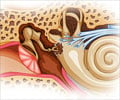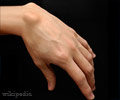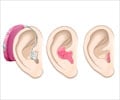Parents of healthy infants and young children with persistent fluid in the middle ear need not worry about developmental outcomes, suggests a recent study
Parents of healthy infants and young children with persistent fluid in the middle ear need not worry about developmental outcomes, suggests a recent study.
It is generally believed that ear fluid has to be removed as it hinders development in children. But this study suggests that inserting ear tubes to remove ear fluid do not improve developmental outcomes up to 9 to 11 years of age. This important study was conducted at Children’s Hospital of Pittsburgh of UPMC led by otitis media researcher Jack Paradise, MD.These findings strongly suggest that no intervention is necessary for most children with fluid in their ears. Results of the study are published in the Jan. 18 issue of the New England Journal of Medicine.
Dr. Paradise and colleagues have conducted a longitudinal study of 6,350 children enrolled before the age of 2 months between 1991 and 1995.
Among the group of those children who developed persistent middle ear fluid before age of 3 years, the researchers found no evidence that prompt insertion of ear tubes improves developmental outcomes compared with delayed insertion if the fluid eventually fails to clear up spontaneously. This finding reverses a decades-old belief held by many in the medical community that fluid in the middle ear may lead to developmental impairment. “These findings provide strong evidence that fluid persisting in the middle ear for periods as long as we studied does not affect developmental outcomes in children as old as 11 and that for otherwise healthy children with middle ear effusion, placement of ear tubes is ordinarily not necessary,” said Dr. Paradise, a longtime pediatrician at Children’s and professor emeritus of Pediatrics at the University of Pittsburgh School of Medicine.
Among children in the United States, otitis media is the most commonly diagnosed illness after the common cold. About 90 percent of children have at least one episode of otitis media by the time they are 3 years of age. The term “otitis media” refers both to ear infections and to fluid in the ear that follows ear infections or can lead to ear infections. Otitis media is inflammation in the lining of the middle ear cavity and usually occurs as a complication of a cold or other respiratory infection. The placement of ear tubes, because of either repeated infections, or persistent fluid or both, is the second most common surgery (next to circumcision) among children in the United States.
About 75 percent of children have at least one episode of otitis media by the time they are 3 years of age. Nearly half of these children have three or more episodes by the time they are 3.
Advertisements
Previous studies by other investigators reported had warned that hearing loss associated with persistent otitis media in young children might result in long-term impairment of their development.
Advertisements
However, these previous studies, because of their design, established no cause-and-effect relationship between otitis media and developmental impairments, according to Dr. Paradise.
His cumulative findings played an important role in the 2004 decision by the American Academy of Pediatrics, the American Academy of Family Physicians and the American Academy of Otolaryngology–Head and Neck Surgery to revise these guidelines for the insertion of ear tubes.
Before 3 years of age, 429 children in Children’s ear study with persistent effusion were randomly assigned to undergo ear tube insertion either promptly or up to nine months later if effusion persisted. Researchers assessed literacy, attention, social skills and academic achievement in 391 of these children at 9 to 11 years of age in the most recent component of the study.
At the time of testing, 84 percent of the children in the early-treatment group and 45 percent of the children in the delayed-treatment group had undergone insertion of ear tubes. There were no significant differences between the two groups in 48 different developmental measures.
These findings, coupled with the relatively minor risk associated with ear tube surgery, provide clear support for conservative management of fluid in the middle ear, as the fluid almost always clears up spontaneously, according to Dr. Paradise. “Our recommended treatment approach for children under age 3 in whom fluid has persisted for three months in both ears or four to five months in one ear now calls for watchful waiting for at least six additional months when fluid is present in both ears and for at least nine additional months when fluid is present in only one ear,” he said.
His contributions have advanced pediatric medicine worldwide in the diagnosis and treatment of common childhood diseases, most notably diseases and disorders of the ears, tonsils and adenoids. His primary areas of research have involved investigation of indications for tonsillectomy and adenoidectomy and the management of middle-ear disease. His studies of these conditions have gained him international recognition.
Among his studies of otitis media, Dr. Paradise discovered the near universality of the disease in infants and young children with cleft palate. He also helped establish the use of tympanometry, a noninvasive test to determine the presence or absence of middle-ear abnormalities. Tympanometry has since become a standard diagnostic procedure in primary care pediatrics and an important tool in clinical studies of otitis media.
Source-Eurekalert
PRI











